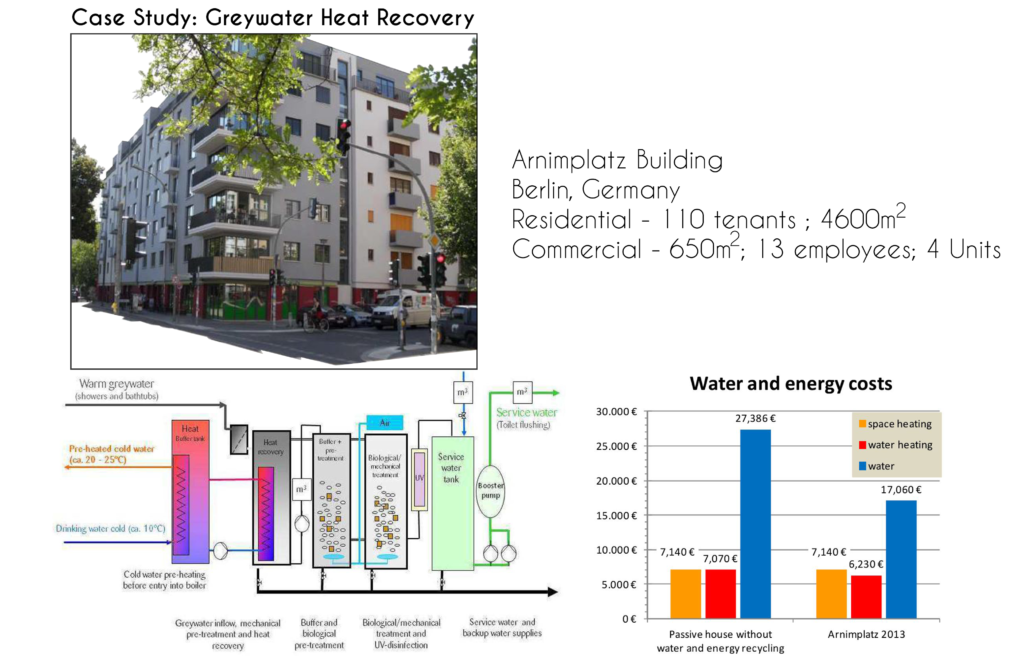Shruti Sahasrabudhe, Larsen Bidstrup, Nishanth Maheshwaran, Jacek Antoni Kostrzewa
MASTER IN ADVANCED ECOLOGICAL BUILDINGS AND BIOCITIES, 2022-2023, IAAC
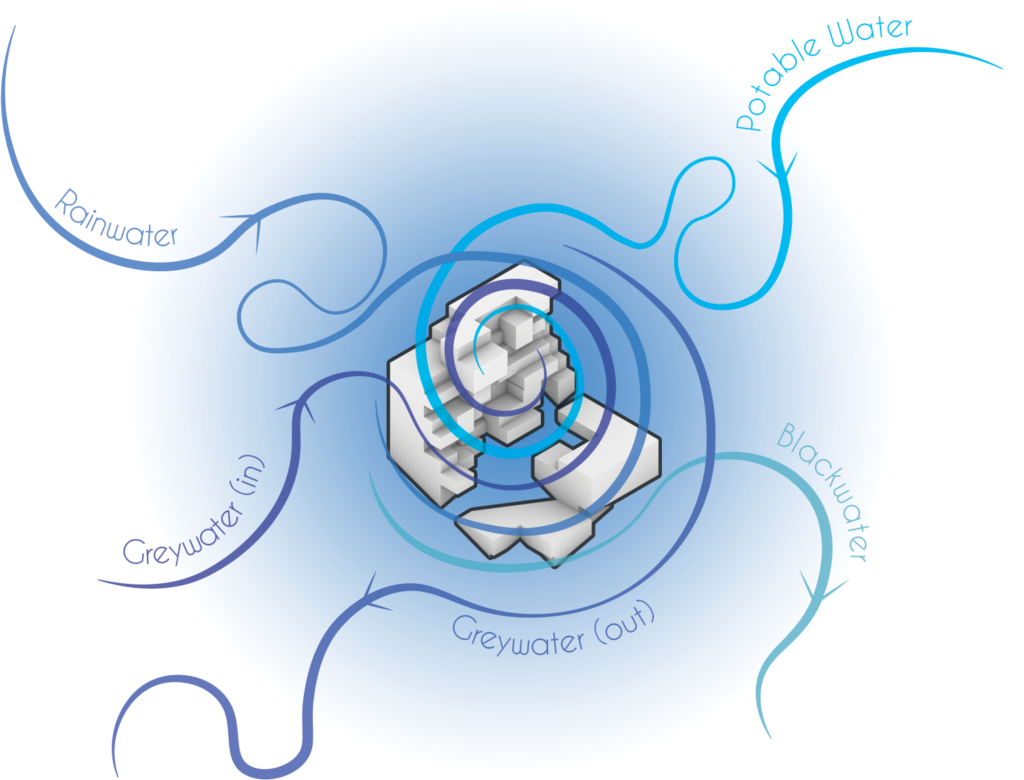
In the Bhuddist traditions of Bhutan, water is holy. We sought to design with this respect top of mind. Before calculating water usage, we classified different water qualities into blackwater, greywater, rainwater, and potable water. On the basis of high respect for our water, these different waterways will interact within our building design in ways to conserve this precious resource.
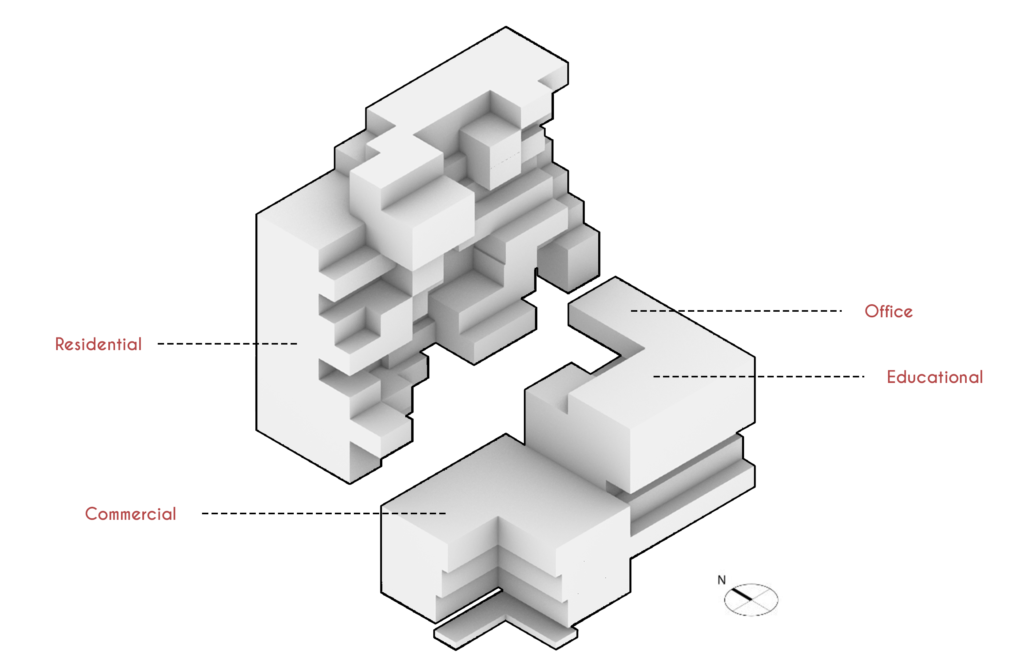
Water Footprint
After calculating the maximum occupancy breakdown across our site, values derived from global water consumption standards gave us the total water use on our site. Further research gave us consumption standards in Bhutan, which our water saving strategies were then applied to.
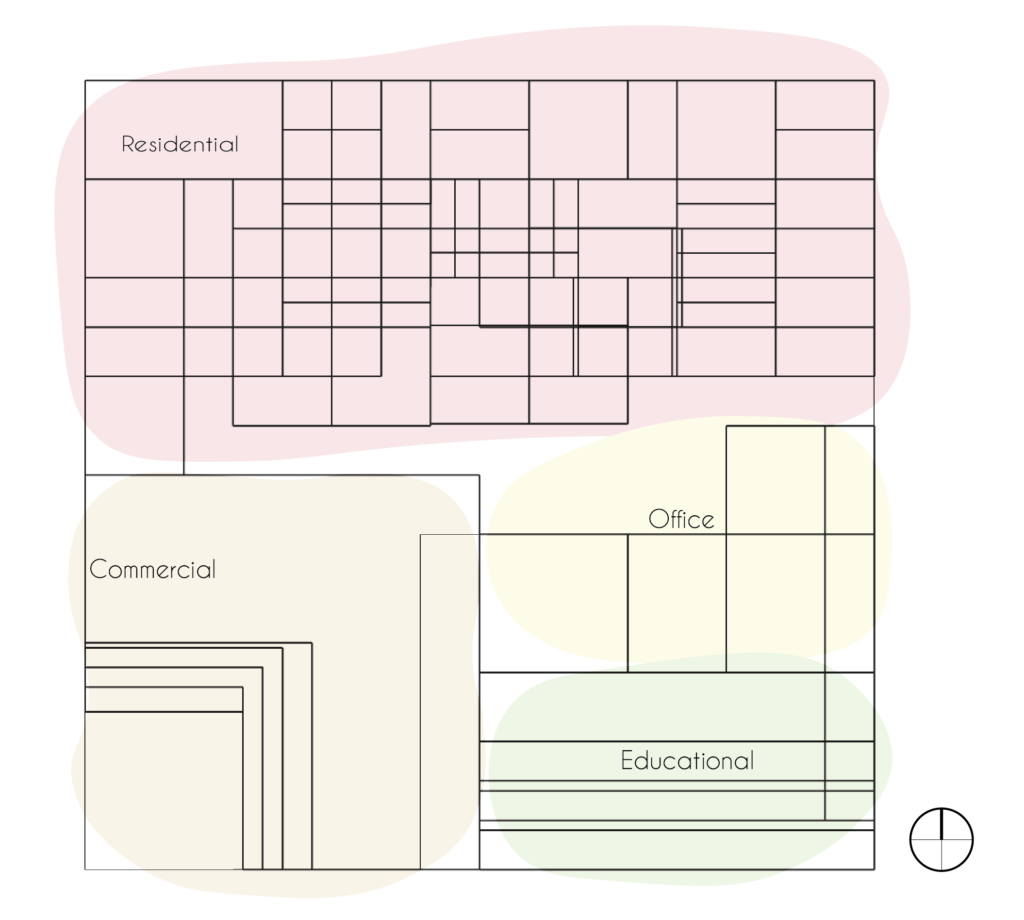

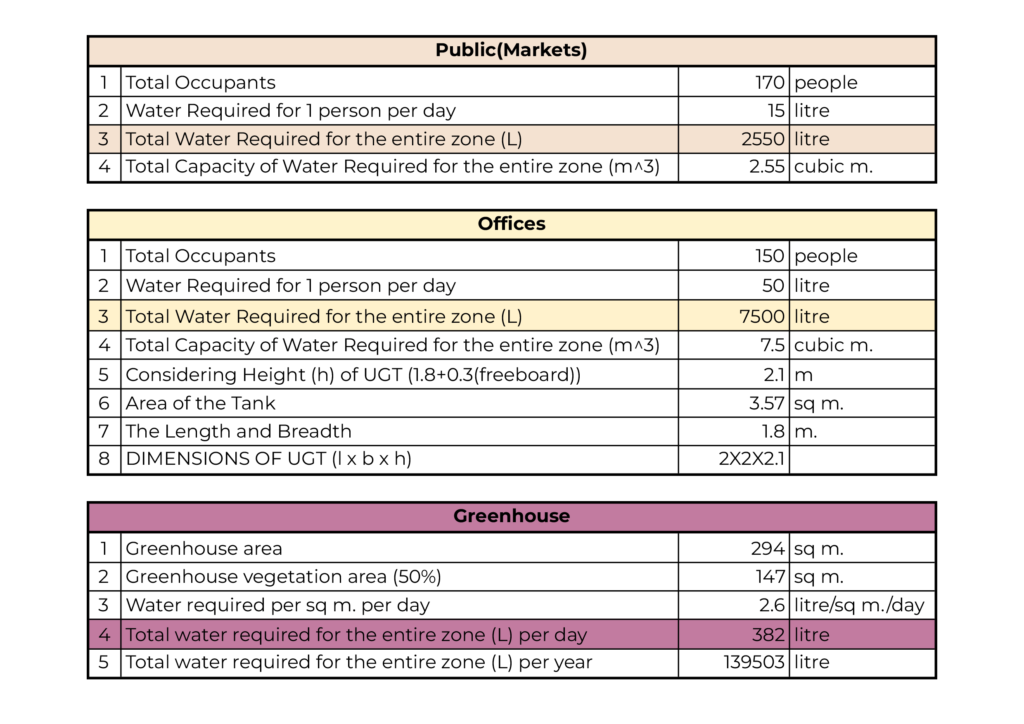

Using modern water-efficient appliances, we can project a reduced amount of water consumption compared to standard appliances.
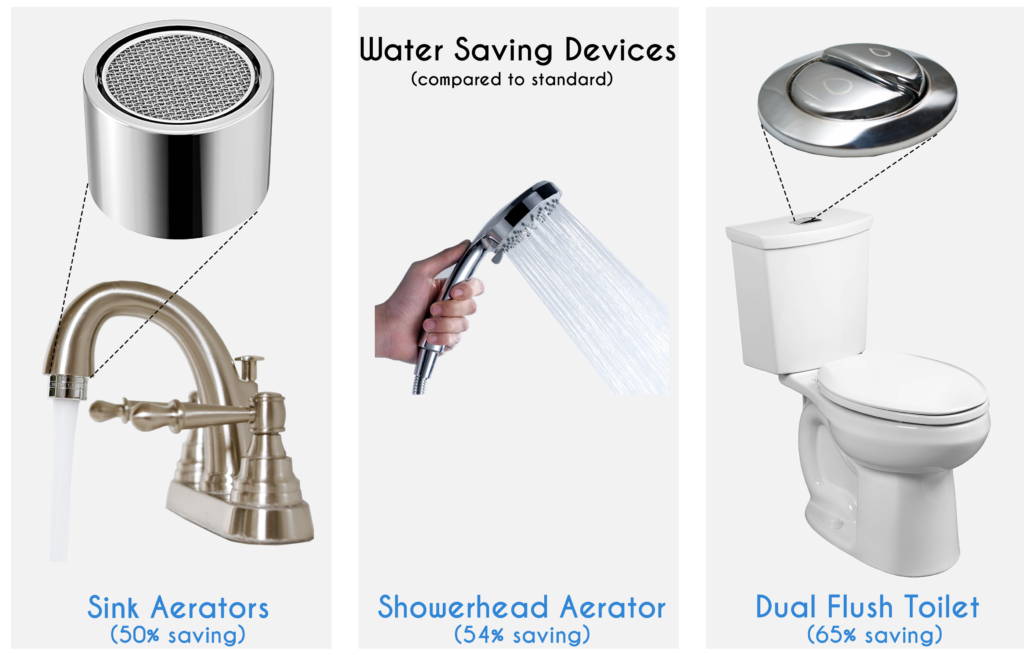
Water footprint broken down per appliance.

With such calculations, the total water footprint of the site was determined in terms inflow/outflow and water quality.

Rainwater Analysis
Weather data provided total rainfall calculations on site. Roofs in each portion of the site were designated as rainfall collection zones, providing an average of 12,000 liters/day of water. This large quantity of greywater was then applied to the system design.
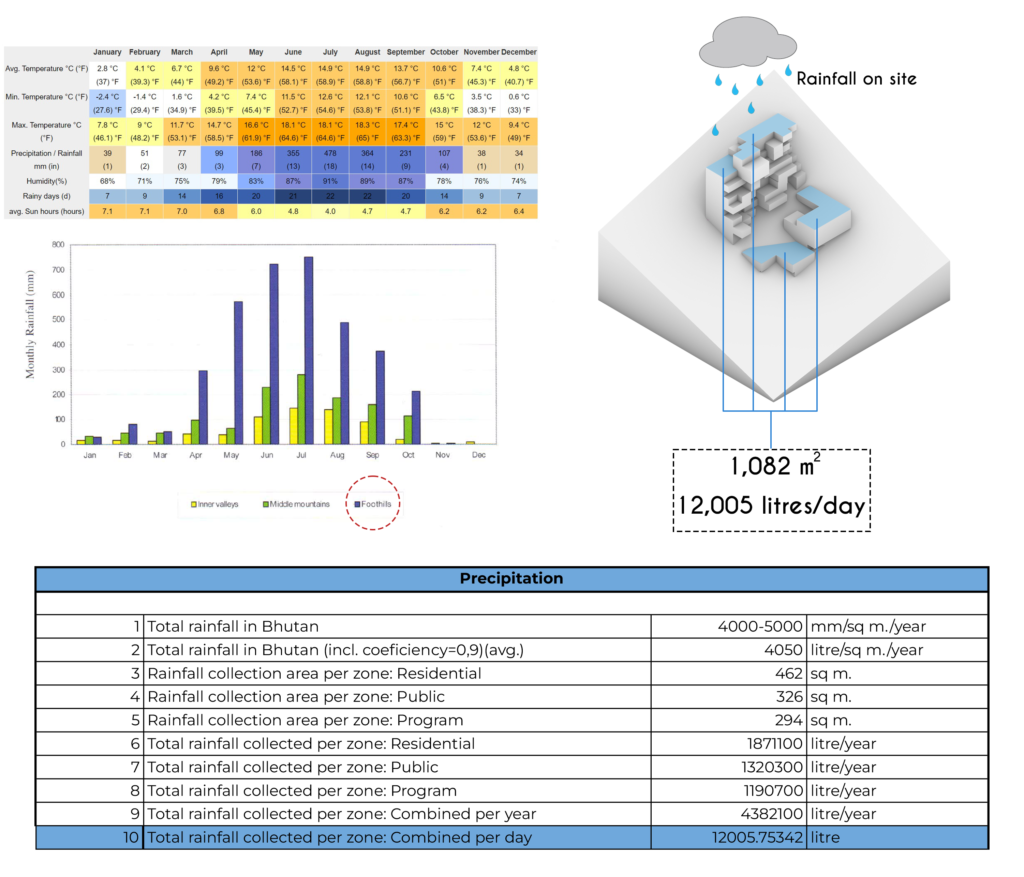
Greywater Treatment
To maximize water re-use on the site, a moving bed biofilm reactor (MBBR) with support of an additional membrane could serve our needs. The treatment system has the capability of cleaning greywater to sanitary levels of sinks, showers, and irrigation.
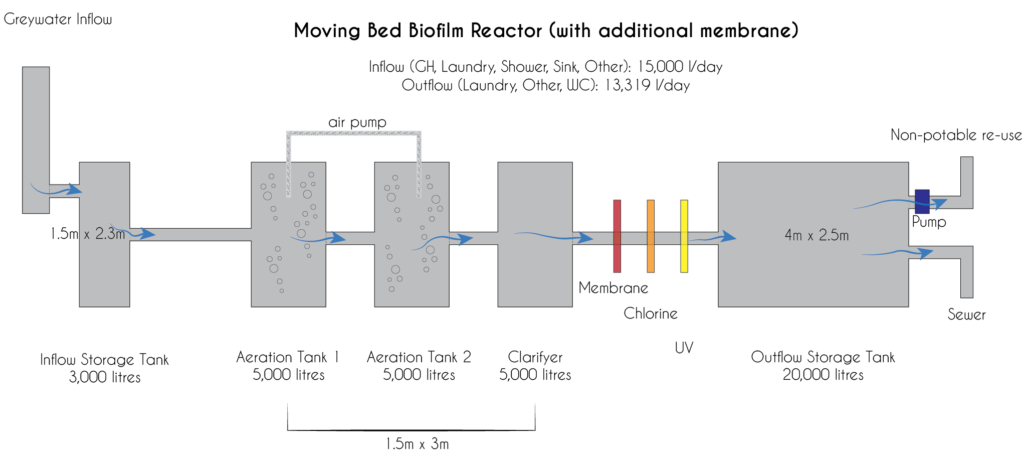
Systems Design
Using the high volume of rainfall in Paro, we devised a system to recycle greywater in all non-potable situations. Therefore, municipal water use is minimal on site to serve only the kitchen sinks and dishwashers. In situations of scarce rainfall, the municipal water can supplement input to the non-potable-treated uses.
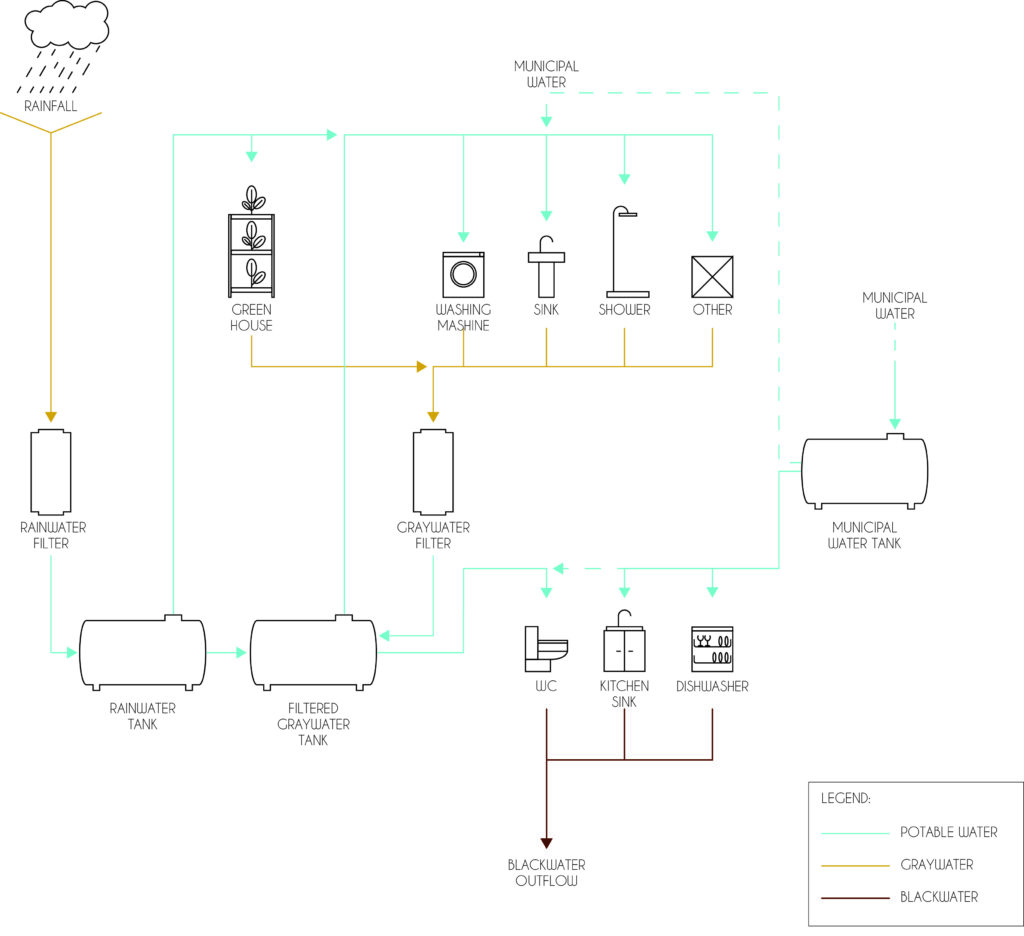
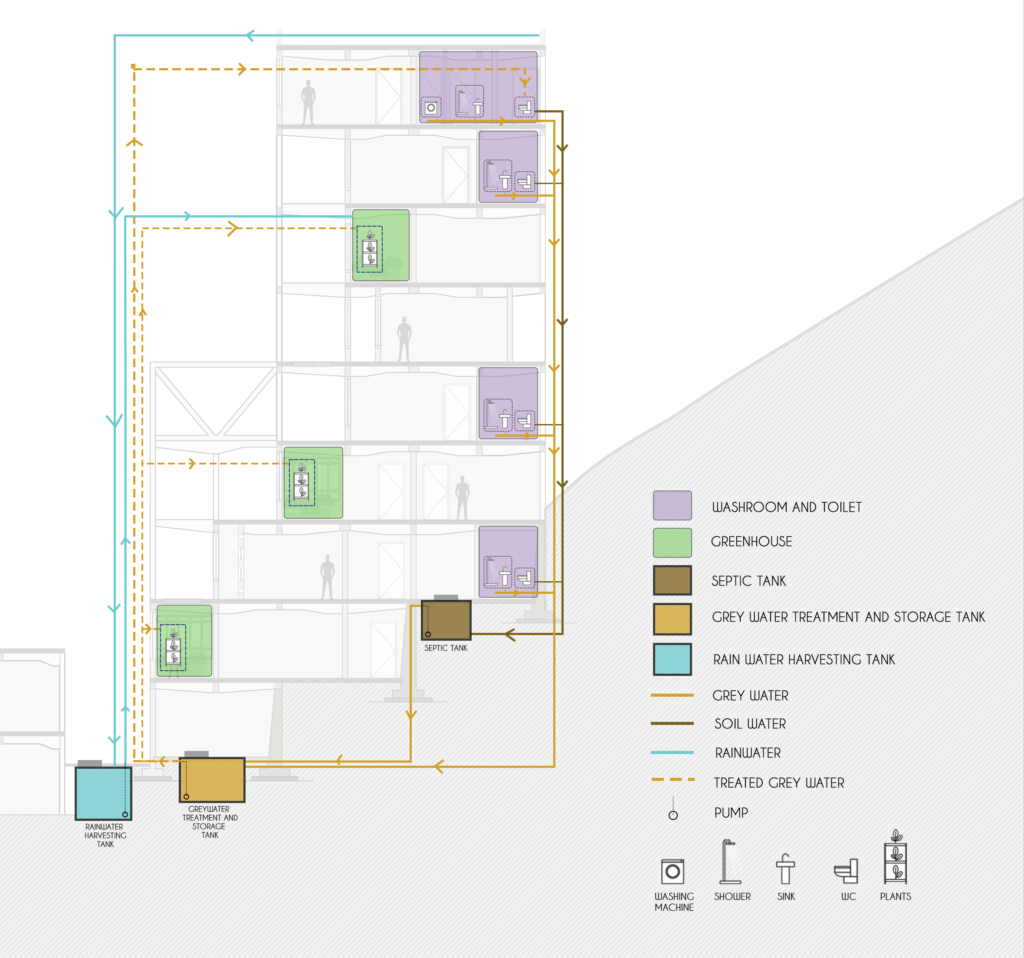
Based on the building footprint, septic tank locations were placed as to ensure accessibility for regular maintenance.

Final Numbers
With rainwater, the MBBR greywater treatment, and water-efficient appliances, the water footprint could be reduced by 95% compared to global consumption standards.
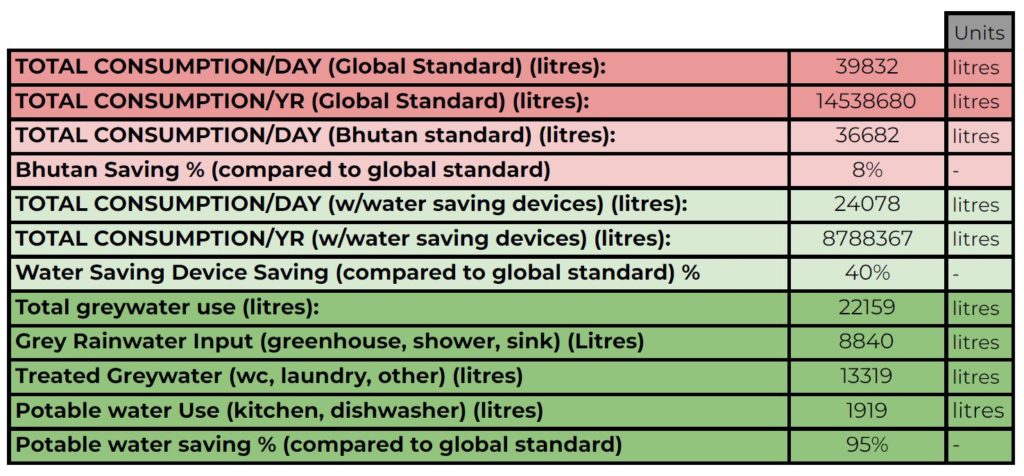
Further Research
To maximize efficiency, greywater treatment can occur in conjunction with a heat recapture system, thus reducing energy and heating costs of the building. The heat exchangers re-use thermal energy from sinks and showers to power future heating needs. With further energy calculations and appliance sourcing, the system in the Arnimplatz Case Study can be implemented, thus enhancing overall efficiency.
